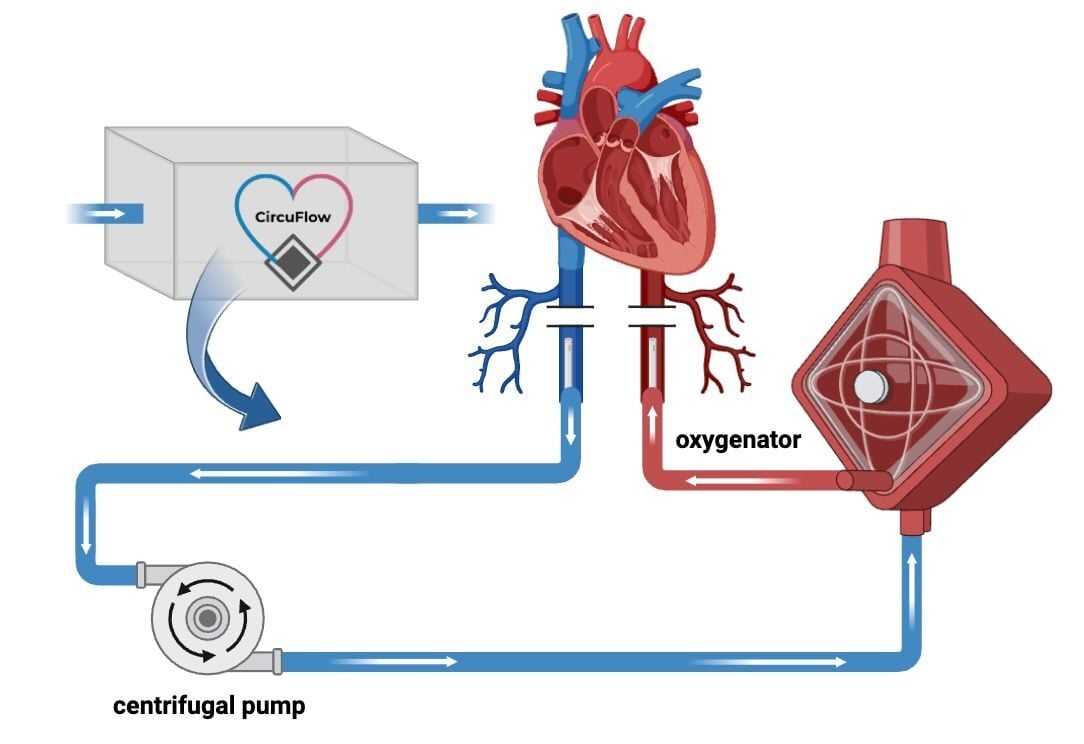
Create
Design Project Gallery
CircuFlow: An Extracorporeal Device to Reduce Afterload During VA-ECMO
- Program: Biomedical Engineering
- Course: EN.580.X12 BME Design Team
- Year: 2025
Project Description:
Cardiogenic shock (CS) is a life-threatening condition in which the left ventricle (LV) cannot pump blood effectively due to impaired contractility. Venoarterial Extracorporeal Membrane Oxygenation (VA-ECMO) is a life-support technology that removes blood from the venous system, oxygenates it outside the body, and returns it to the arterial system for organ perfusion. VA-ECMO is often the only option for critically ill CS patients who cannot tolerate invasive procedures. Despite its benefits, VA-ECMO has a high mortality rate of nearly 60%, mainly due to increased afterload—the resistance the LV must overcome to eject blood. In patients on VA-ECMO, afterload increases due to continuous retrograde blood flow toward the aortic root. During systole, the compromised LV cannot expel residual blood against this higher pressure, causing blood stasis and LV distension. CircuFlow, a non-invasive device, reduces afterload during systole by creating pulsatile flow and alleviates LV burden, reducing downstream complications.
Project Photo:
VA-ECMO circuit with the CircuFlow. Deoxygenated blood is drawn from the venous cannula and driven through the circuit via the centrifugal pump. After passing through CircuFlow, the blood is returned to the patient via the arterial cannula. CircuFlow is non-invasive and reduces afterload.
Student Team Members
- Nina Nair
- Ayan Vaishnav
- Claire Chung
- Gloria Kalnitskaya
- Iris Kwon
- Ramya Palani
- Samantha Ho
- Shreeram Sabareesan

